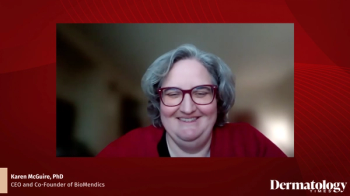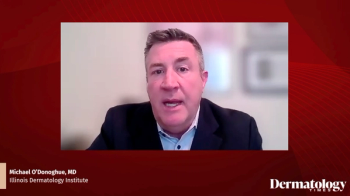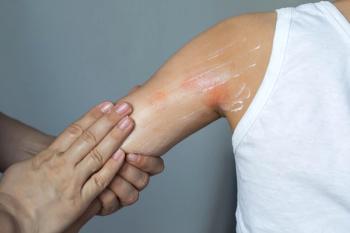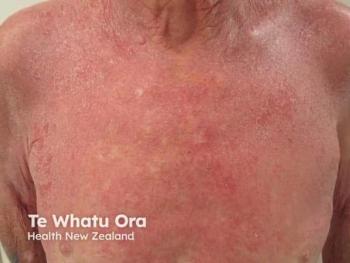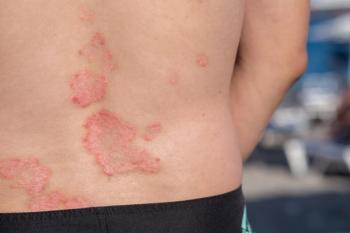
Kicking Off AAD 2024 With Content to Look Forward to and Expert Advice on Optimizing Your Time
Read more on what you can expect at this year’s AAD meeting and how to navigate all the opportunities.
The 2024 American Academy of Dermatology (AAD) Annual Meeting kicks off today in San Diego, California, and promises a wealth of knowledge, networking, and collaboration to attendees. With over 300 educational sessions, dermatology clinicians have an immense variety of topics and data to learn more about.
Sessions at AAD are categorized as focus sessions, courses, forums, and symposiums. Friday’s nearly 100 sessions range from discussions on surgical tips and conquering board exams to dermatopathology case challenges and chronic pruritus.
AAD is known as the hub of late-breaking data, and attendees are eager to attend Saturday and Sunday’s late-breaking sessions from 9am-12pm PT on Saturday and from 1-4pm PT on Sunday. Dermatology Times will be front and center as we provide updates to our audience on upadacitinib for vitiligo, lutikizumab for hidradenitis suppurativa, tapinarof cream for patients with skin of color with atopic dermatitis, phototherapy for patients with plaque and guttate psoriasis, and more. To stay up to date on the latest AAD updates, sign up for daily
The annual 5-day conference is full of informative presentations, panel discussions, live patient workshops, Q&A sessions, and networking opportunities. The editors of Dermatology Times will be covering the conference live in person, reporting on numerous engaging sessions, as well as conducting exclusive interviews with experts in the field.
As dermatology clinicians prepare for San Diego, Dermatology Times spoke to AAD presenters about how to navigate AAD as the largest dermatology meeting in the country, especially for early-career clinicians who may not have attended previously.
Neal Bhatia, MD, FAAD: I always try to remind everyone who's either new to dermatology industry, new to dermatology press, or new to any part of dermatology that the academy is not a conference. I hear people say all the time, “Are you ready for the conference?”The conference is actually the least important part of the academy. The academy is the mothership where everything happens: the committees, the plenaries, the elections of officers, and obviously the networking and research, but also the presentations of new world data and everything else that goes along with moving the specialty forward in the structure. And again, you can attend conferences all year long. But the academy is not a conference...There are so many different ways to find yourself at the academy.
Iltefat Hamzavi, MD, FAAD: If you're coming to AAD for the very first time, get ready for a sensory overload. But at the same time, there are a couple of components of AAD. It's full of incredible information, great presentations from world-class presenters, and you're going to have cutting-edge data. You're also going to develop friendships that if you keep coming, will make the specialty fun. You'll also get to meet patient groups that are the inspiration and mission behind our work. And then you'll see this incredible collaboration with industry that allows us to develop some of these newer treatments. We're grateful for all of the AAD staff who put such a great show on. It is the biggest dermatology meeting in the world. And when you get there, you feel it. So, enjoy it. But keep coming back because you'll have lifelong friendships and you really advance the care of your patients.
Alexandra Kimball, MD, MPH, FAAD: AAD is definitely a meeting where you are drinking out of a firehose. There are so many wonderful lectures and engagements and speakers, as well as networking that you can do there. Certainly, my favorite sessions are usually the late breakers because that's the hot new data. But it's also an opportunity to go and look at areas where maybe you are not as strong in your clinical practice, or maybe you haven't been keeping up. I always try to leave 5% or 10% of my time for just something I know nothing about.
Richard Gallo, MD, PhD, FAAD: AAD is a wonderful opportunity both to learn and to hear from the world's experts in skin disease, as well as for fellowship and for meeting face to face with your colleagues, those individuals that are key opinion leaders in particular aspects of dermatology, as well as just having fun because this is a great group of people to interact with.
Sonya Kenkare, MD, FAAD: To maximize your time, take a look at the agenda in advance. There are so many concurrent sessions, so making a little bit of a plan for the ones that you really want to attend will let you attend the talks that are the highest yield for your interests.
Susan Taylor, MD, FAAD: For new attendees, I want you to look very carefully at all of the scientific and educational offerings. Don't just head right to that exhibit hall. But what I want you to do is identify what you want to learn. Do you want to learn the newest in psoriasis or HS or atopic dermatitis? Then you can mark off those particular sessions and create your own personalized calendar. If you don't do that, then you're not going to know which way to turn. Then, identify times when you can go to the exhibit hall, where you can learn from the various pharmaceutical companies about their products. You have to be really intentional when you create your personalized AAD schedule.
Andrew Alexis, MD, MPH: For dermatologists new to AAD, I suggest immersing yourself in the program schedule beforehand. Explore sessions and workshops that align with your practice or areas you're eager to delve into further, whether it's emerging treatments, innovative research, or practical clinical skills. During the conference, seize the opportunity to attend networking events and visit exhibition booths; these moments can provide valuable insights and connections. Feel free to engage with presenters during Q&A sessions and actively participate in discussions with fellow attendees. Remember, AAD is more than just attending sessions; it's an opportunity to fully engage with the dermatological community, enhance your knowledge, and establish meaningful connections.
Email
Newsletter
Like what you’re reading? Subscribe to Dermatology Times for weekly updates on therapies, innovations, and real-world practice tips.

